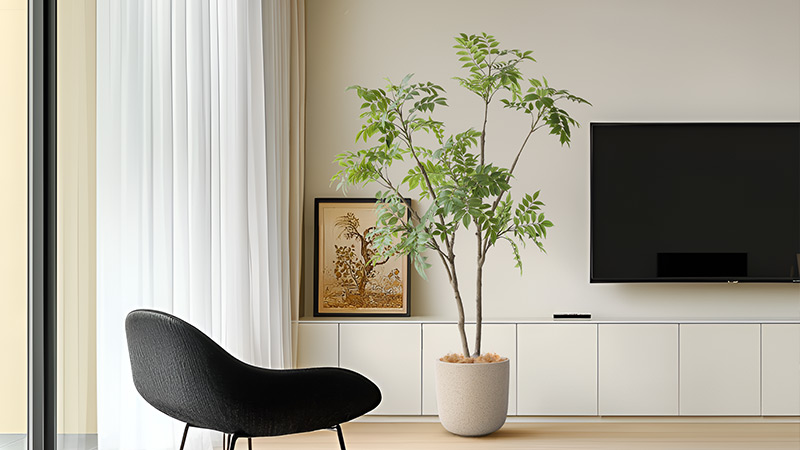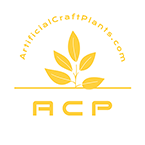Artificial plants have come a long way from their plastic-looking past. Today’s high-quality options can fool even the keenest eye—if you know what to look for. But for B2B buyers, sourcing realistic artificial plants isn’t just about aesthetics. It’s about delivering lifelike greenery that meets customer expectations while ensuring durability and cost-effectiveness.
How can you distinguish premium artificial plants from low-quality ones?
This guide provides practical sourcing tips, material comparisons, and must-ask questions to help B2B buyers secure high-realism artificial plants.
What Defines a High-Realism Artificial Plant?
Not all artificial plants are created equal. The most realistic options share key characteristics:
✅ True-to-life texture – Leaves should have natural veins, flexible movement, and a soft touch.
✅ Color variation – A single-tone green plant looks fake; premium ones blend shades for a natural effect.
✅ Quality materials – PU, PE, and silk mimic real plants better than cheap plastic.
✅ Fine detailing – Natural imperfections, irregular leaf patterns, and subtle gloss levels add realism.
✅ Strong but flexible structure – Stems should be sturdy yet bendable for natural shaping.
Comparing Materials: Which Look the Most Realistic?
Material selection plays a huge role in realism. Here’s a breakdown of the most commonly used options:
| Material Type | Realism Level | Texture | Best Used For |
|---|---|---|---|
| PU (Polyurethane) | ⭐⭐⭐⭐⭐ | Soft, flexible, most natural feel | High-end artificial trees, luxury foliage |
| PE (Polyethylene) | ⭐⭐⭐⭐ | Slightly firmer but realistic | Outdoor greenery, durable plants |
| Silk Fabric | ⭐⭐⭐⭐ | Soft, delicate, realistic sheen | Indoor artificial flowers, ornamental leaves |
| PVC (Polyvinyl Chloride) | ⭐⭐⭐ | Stiffer, plastic-like | Budget-friendly decorations |
| EVA (Ethylene Vinyl Acetate) | ⭐⭐⭐ | Smooth, slightly rubbery | Artificial succulents, tropical leaves |
💡 Pro Tip: For the highest realism, PU and silk offer the best texture and natural movement, while PE is ideal for durable, lifelike outdoor plants.
B2B Sourcing Tips for High-Realism Artificial Plants
1. Inspect Texture & Detail
- Touch the leaves – PU and silk should feel soft and slightly flexible, not stiff or overly smooth.
- Check for leaf veins – The best artificial plants replicate natural vein patterns and slight irregularities.
- Look for natural gloss – A subtle, non-plastic shine is key; excessive gloss signals low quality.
2. Evaluate Color Depth & Variations
✅ Realistic shading – High-quality plants blend multiple shades of green, rather than using a flat color.
✅ Natural stem colors – Good designs feature brown, reddish, or slightly yellowish hues, mimicking real stems.
✅ Gradual transitions – Leaves should have subtle color changes, avoiding harsh paint-like coatings.
📌 Ask your supplier: “Do your products feature multi-tone coloring for enhanced realism?”
3. Check the Construction & Build Quality
- Flexible stems allow natural shaping and positioning.
- Durable inner wire ensures stems hold their shape without breaking.
- Seamless joins prevent visible glue or harsh cut edges.
4. Request Real Photos & Videos
Never rely solely on catalog images. Ask for:
✅ Close-up shots in natural lighting.
✅ Videos showing movement to assess flexibility and texture.
✅ Side-by-side comparisons with real plants, if possible.
5. Consider Customization Options
For businesses selling to high-end markets, custom artificial plants provide a competitive edge. Look for suppliers offering:
- Custom coloring for precise aesthetic matching.
- Handcrafted details like manually applied leaf veins and hand-painted stems.
- Exclusive mold designs that replicate rare or unique plant species.
Common Myths About High-Realism Artificial Plants
"More expensive always means more realistic."True
Not necessarily! Some high-cost options use premium materials but lack fine detailing. Always inspect before buying.
"All PU plants are better than plastic ones."False
Mostly true, but low-grade PU can still look artificial if not processed correctly.
Conclusion
For B2B buyers, sourcing high-realism artificial plants means prioritizing material quality, detailed construction, and natural color variations. PU, PE, and silk deliver the best lifelike appearance, while careful supplier selection ensures consistency and value. With these sourcing tips, your business can offer artificial greenery that’s nearly indistinguishable from the real thing.

Hello everyone, I'm Li!By day, I'm a seasoned expert in the artificial plant industry, starting from the factory floor and working my way up to running my own successful business. In my free time, I’m passionate about running and often join trail runs with friends.Here to share what I've learned—let's grow together!



